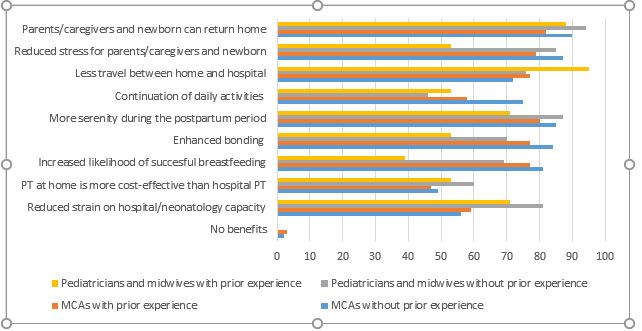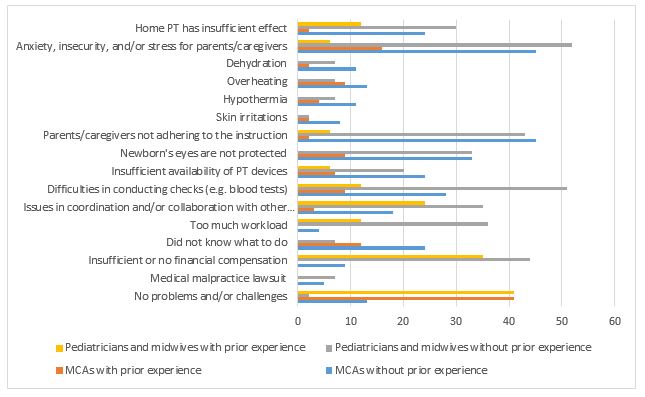Neonatology
Session: Neonatal Hematology & Bilirubin Metabolism
449 - Current practice and attitudes towards phototherapy at home for neonatal hyperbilirubinemia: a national survey among health care professionals.
Saturday, May 4, 2024
3:30 PM - 6:00 PM ET
Poster Number: 449
Publication Number: 449.1446
Publication Number: 449.1446

Jessie Spaan (she/her/hers)
PhD candidate
Erasmus MC
The Hague, Zuid-Holland, Netherlands
Presenting Author(s)
Background: Phototherapy (PT) is standard care for neonatal hyperbilirubinemia, and accounts for up to 35% of hospital (re)admissions. PT at home may be a safe and effective alternative for (near)term newborns with a physiological cause of hyperbilirubinemia. However, data on current practice of PT at home as well as attitudes of health care professionals are largely lacking.
Objective: To explore the perspectives of healthcare professionals on PT at home.
Design/Methods: An online survey was carried out among healthcare professionals (pediatricians, community midwives and maternity care assistants, the primary caregivers at home during the postpartum period) with and without experience with PT at home. The questionnaire covered eight topics: (1) background information, (2) experience with PT at home, (3) interest and motivation, (4) responsibility, (5) logistics and collaboration, (6) knowledge and information provision, (7) indications and contraindications, and (8) financial aspects and implementation readiness. Data were analyzed using descriptive statistics.
Results: 668 healthcare professionals completed the survey (16 pediatricians, 90 community midwives, and 562 maternity care assistants). Seventeen pediatricians and community midwives, and 68 maternity care assistants had experience with PT at home. PT at home is generally well-received by healthcare professionals with experience, expressing satisfaction with its implementation (70%). The majority of respondents without experience expressed agreement with the notion that newborns with hyperbilirubinemia should have the possibility of receiving PT at home (79%). Multiple benefits of PT at home are reported in both groups (Figure 1). Nearly half of the respondent with experience reported no problems or challenges. However, most respondents without prior experience foresee problems and challenges (Figure 2). Identified challenges mentioned by pediatricians and community midwives included difficulties in coordination and collaboration between pediatricians, community midwives and maternity care assistants (24%) and insufficient or absent financial compensation (35%). Among maternity care assistants, prevalent challenges included anxiety, uncertainty and stress for parents (16%) and a lack of knowledge regarding the appropriate course of action (12%).
Conclusion(s): PT at home is well-received and perceived as beneficial by healthcare professionals. To successfully implement PT at home, ensuring financial compensations, adequate collaboration between the different healthcare professionals, adequate support at home, and education on PT at home is essential.


